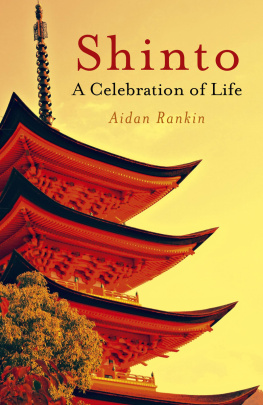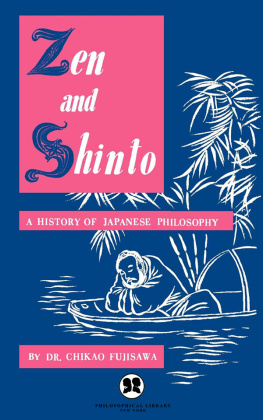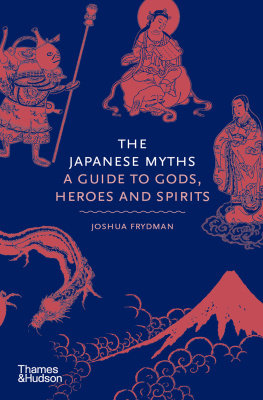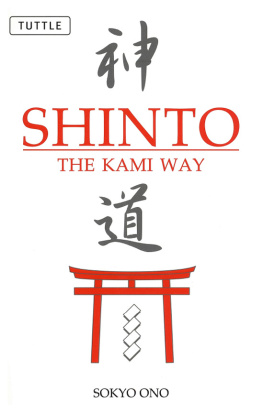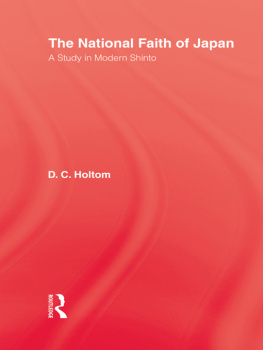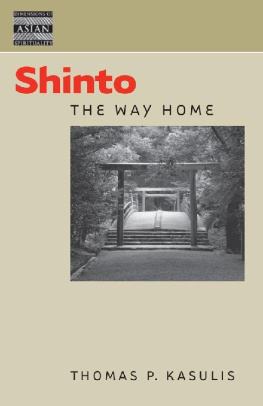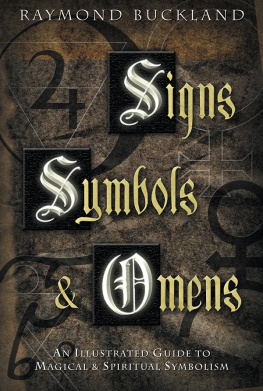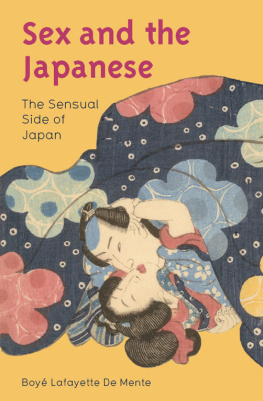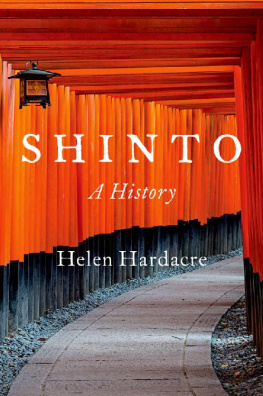Acknowledgements
The writing of this book would not even have been contemplated without the help and support of the Japanese Dutch Shinzen Foundation. I am especially indebted to its Chairman and Vice Chair, respectively Professor Fons Elders and Madeleine Wardenaar, MA, and its Director, Paul de Leeuw, MA. Their insights, practical support and generous hospitality have inspired me to explore the Shinto tradition and helped me understand its relevance to the whole of humanity.
Paul is a Kannushi, a role that has traditionally been translated as Shinto priest. However the word priest does not convey the true character of his role. In one sense, it is too much: Paul does not claim that his knowledge gives him divine authority over others or the right to impose his own doctrinal version of Shinto. On the contrary, his own experiential training enables him to act as a conduit for the power of Kami. In Shinto, Kami is at once the divine presence and the life force pervading and connecting together everything in the universe.
Shintos aim is to awaken us to something larger than our immediate selves, so that we become aware of our connectionssocial and ecological with the rest of humanity and the natural world. Through this awareness, we encounter our true selves. Yet another, equally important, purpose is to alert us to the myriad possibilities contained in the universe, so that we learn to think, reason and feel for ourselves, have confidence in our thoughts and feelings and seek to realize our full potential as human beings. Thus in Shinto there is no division between the individual and social realms, between our personal responsibilities and our social obligations, which include obligations to nature, as the creative expression of Kami.
In this sense, the Kannushi has a wider or at least a very different role from that which we have come to ascribe to a priest. He or she enables us to reach into the unconscious, to integrate the world of dreams with our waking lives so that we recognize both as aspects or levels of reality. The Kannushi helps us to access our social conscience as well, so that we connect spiritual development with working towards a more just society and co-operating with the Earth rather than trying to conquer it for ourselves. The integration of our rational and intuitive powers, which is the Kannushis true role, has implications for every aspect of our lives and for the way we organize our human community. The Kannushi could be said to be a modern Shaman. Or, to express it less baldly but more accurately, his role is that of the shaman evolved over the centuries to meet the needs of an urban and increasingly technological society. Rather than priest (or shaman), Paul prefers the designation Shinto Master ( Shintomeester in Dutch) as this conveys better to westerners the experience of being a Kannushi.
Paul de Leeuw has studied extensively in Japan and introduced Shinto to the spiritually hungry soil of Europe. I have had the pleasurable and, in the true sense of the word, educational experience of working with him on the English version of The Essenceof Shinto by Grand Master ( Kanchou) Yamakage Motohisa, who presides over one of the oldest schools of Shinto in Japan and is Pauls initiator. I therefore offer my thanks to Grand Master Yamakage as the intellectual and spiritual ancestor of this project. And in the true spirit of Shinto, I would also like to thank my mother and father, Anne and David Rankin, for their love and encouragement.
John Hunt, my publisher, was as always positive and gently encouraging throughout as were his colleagues at O Books. I thank all of them for making this book possible.
Last, but by no means least, I would like to thank Brian Scoltock for all his practical help and moral support, and for putting up with me in both London and Yorkshire while I was hard at work on this book and probably talking about it far too much.
I hope that this book will be a worthy reflection of the creative spirit of Kami, which exists within us all.

Chapter One: The Unbroken Thread
Shinto offers a path to Kami to men and women of all traditions and backgrounds.
Yamakage Motohisa, 79th Grand Master of Yamakage Shinto
An Indigenous Faith, A Universal Pathway
Shinto is the native faith of the Japanese people. It has ancient roots, being descended directly from spiritual practices dating back to at least 14,000 BCE. Therefore as long as there has been human habitation of the Japanese islands, there has been Shinto. But it was not always called Shinto and even today the term is more often used in the west than in Japan. The original Shinto was a wide variety of folk practices associated with region, tribe, extended family and community. These remain the most authentic expressions of Shinto practice. This is because in Shinto a rock formation, a freezing waterfall, a snow-capped mountain, a forest or even an ordinary-looking tree can be points of connection with divine power or the spirit world. The original Shinto was highly local, but it was also universal an aspect of primal spirituality that saw nature as the gateway to something higher than oneself and reminded humanity to live as if nature mattered.
Shinto became a more unified system as Japan itself became a more centralized power. The earliest Chinese historical accounts of Japan, from 57 CE, refer to it as the land of Wa, a loose federation of more than a hundred tribal communities without a written script or a central government. This situation changed quite dramatically over the next five centuries, much of that change arising through Chinese and Korean influence in cultural and religious as well as political and economic spheres. The foundations for the imperial state were laid in those centuries and this process is reflected in the two publications of greatest importance to Shinto: the Kojiki (Record of Ancient Matters) in 712 and the Nihongi (Chronicles of Japan) of 720.
These two volumes are not equivalents of the Bible, Torah or Koran, or even the Bhagavad Gita. They are more like the Norse Eddas, in that they are compilations of myths, tales and descriptions to act as points of cultural reference rather than as articles of faith. In the Nihongi especially, these are linked to the history of Japan and its emergence as an empire. Shinto is established as a cultural background as much as a spiritual tradition.
This version of Shinto is thereby very different, at one level, from the tribal forms of spirituality from which it emerged. It is hierarchical, centered on the Emperor as a spiritual unifier as well as Head of State the Emperor has, famously (or infamously) at times been regarded as deity in his own right, descended from the Sun Goddess Amaterasu. State Shinto has been associated with national identity, as opposed to Folk Shinto which is associated with local cultures and identities and beyond that universal human spirituality.
But at another level, Shinto has remained the same. For example the Sun Goddess, who has for many centuries been seen as the center of the Shinto pantheon, is the personification of solar power, which gives life to the Earth. Her worship is the continuation of an ancient solar cult, and it also marks the deep affinity with the natural world that has persisted through the development of a literate culture and urban economy. Also, she represents the continued centrality of the feminine principle in spiritual practice, and the association of that principle with nature and life. The ancient converges with the modern in a way that is now highly relevant to us, from a western standpoint. Scientific evidence, along with the problems caused by pollution and over-consumption which we all feel in our daily lives, has made us realize that we must re-evaluate our relationship with the environment. A parallel imbalance in human relationships is making us see the need to move towards a post-patriarchal society. Shinto shows that both male and female principles can be honored and valued, and that the most ancient forms of religious worship are compatible with a modern, technologically advanced civilization indeed more relevant than ever.

